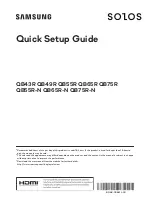
Technical Information
5
1.3 Dust reduction feature
1)Overview
Digital SLRs having interchangeable lenses are susceptible to dust entering the camera
when the lens is changed. The dust can then adhere to the imaging sensor and show up as
dust spots on the images. A feature to remove dust on the sensor has been most desirable. The
EOS D REBEL XTI / EOS 400D D incorporates a three-step, dust-reduction feature to effectively
remove dust spots from images.
⑴Self Cleaning Sensor Unit
Dust adhering to low-pass filter 1 in front of the imaging sensor
is shaken off. (Fig. 004)
⑵Dust Delete Data acquisition and appending
The Dust Delete Data is obtained and appended to the image to
enable the software to erase the dust spots automatically.
⑶Manual cleaning of imaging sensor
With mirror lockup, you can clean the sensor manually.
Based on the Self Cleaning Sensor Unit and Dust Delete Data
acquisition and appending feature, the overall strategy of not
generating, not attracting, and not leaving dust is pursued as
follows:
●Not generating dust
・ The shutter unit (same as EOS KISS DIGITAL N) generates minimal dust.
・ The body cap is now made of a material which minimizes dust caused by normal
wear and rubbing. (Incorporated since the first half of 2005.)
●Not attracting dust
・ The low-pass filter is treated with a anti-static charge process to prevent static-
charged dust from adhering to it.
●Not leaving dust
・Self Cleaning Sensor Unit.
・Dust Delete Data acquisition and appending.
2)Self Cleaning Sensor Unit
Prior to developing this unit, we analyzed the causes of visible dust and their types and
sizes. The dust becomes most noticeable at small apertures. We studied what sizes of dust
were the worst offenders at small apertures. The
Self Cleaning Sensor Unit was then developed to
effectively eliminate those types of dust.
⑴Unit configuration
Low-pass filter 1 on the front of the sensor
is attached to an ultrasonic vibrating unit
driven by a piezoelectric element. By subjecting
low-pass filter 1 to ultrasonic vibrations, the
adhering dust is shaken off the surface (Fig.
005). The removed dust then sticks to an
absorbent material* ringing the low-pass filter 1.
This unit also has an internal O-ring around the
Fig. 004 Self Cleaning
Sensor Unit
Fig. 005 Unit configuration
CMOS sensor
Low-pass filter 2
Phaser layer
Infrared-absorbing glass
O-ring
Support material
Piezoelectric
element
Low-pass filter 1
















































